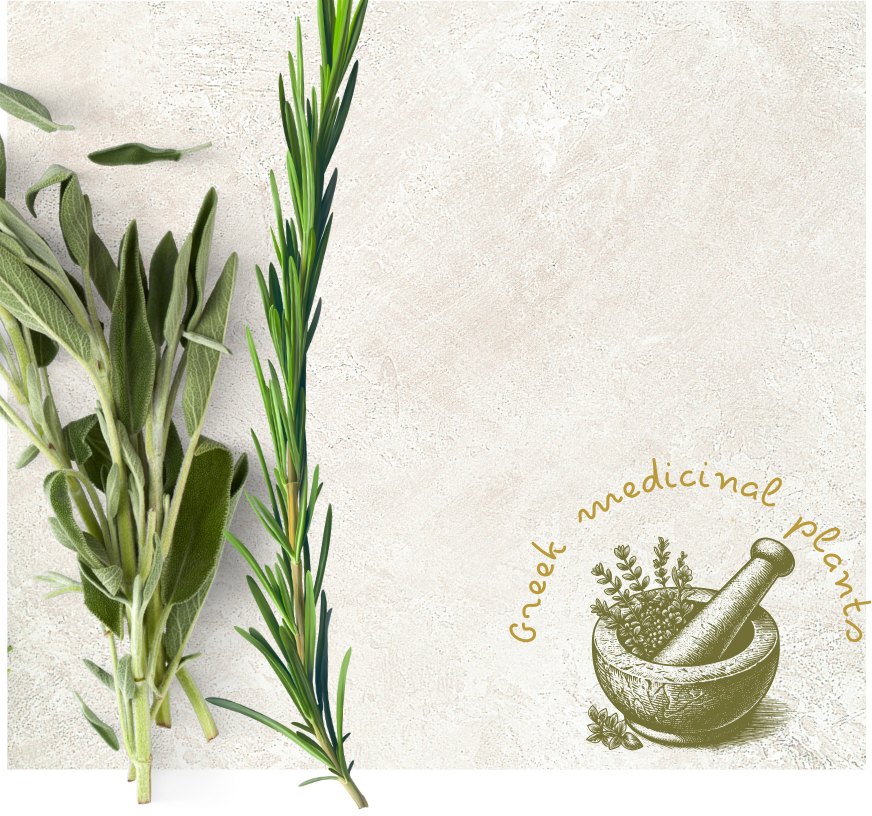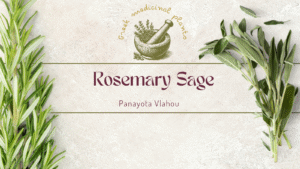Allies through History
Rosemary and Sage are more than just flavorful kitchen herbs. They’re ancient allies with scientifically proven benefits that enhance mental clarity, physical health, spiritual balance, and sensory enjoyment. Whether you're sipping a tea, burning a smudge, or mixing a tincture, these time-honored plants offer a meaningful connection between the past and your everyday wellness.
In this article, we'll explore the myths, famous herbalists' insights, and how rosemary and sage can be grown, brewed, burned, or bottled right at home.
A Glimpse into Myth and Lore
In ancient Greece and Rome, rosemary symbolized remembrance and fidelity. Students wore rosemary garlands during exams to boost memory, a tradition echoing into modern aromatherapy research. The herb was also burned at funerals and weddings, connecting memory with both endings and beginnings.
Sage, whose Latin name Salvia means "to save," was considered sacred by the Romans. It was used in purification rituals and thought to grant immortality and wisdom. In Celtic lore, sage was believed to offer protection from evil spirits, and it later became a staple in monastic herbal gardens throughout medieval Europe.
One of the most famous stories linking both herbs comes from Queen Elizabeth of Hungary, who allegedly used a rosemary-based tonic (later known as Hungary Water) to regain vitality and attract a suitor at age 72. While the exact formula is unknown, rosemary and sage were commonly combined in distillates and tinctures of the time.
Insights from Historic Herbalists
- Hildegard of Bingen, a 12th-century abbess and herbalist, praised sage for its ability to warm the body and clarify the mind.
- Nicholas Culpeper, the 17th-century English botanist, described rosemary as "a remedy for all cold diseases" and sage as "a sovereign herb for the brain."
Both herbs were staples in apothecaries and kitchen gardens and are now recognized in modern pharmacopeia for similar benefits.
Science-Backed Benefits
Cognitive Function:
- Rosemary contains carnosic acid and 1,8-cineole, both known to improve memory and mental clarity.
- A 2003 study showed that sage extract significantly enhanced working memory and attention in healthy adults (Kennedy et al., 2003).
Anti-inflammatory & Antioxidant Properties:
- Both herbs are rich in flavonoids and rosmarinic acid, which reduce inflammation and oxidative stress.
Antimicrobial Activity:
- Sage and rosemary essential oils have shown effectiveness against bacteria like E. coli and Staphylococcus aureus, making them useful in natural cleaning and oral health products.
Everyday Uses: 7 Ways to Incorporate Rosemary & Sage
- Herbal Tea:
- Steep 1 tsp of dried rosemary and 1 tsp of sage in boiling water for 5–10 minutes. Add lemon or honey. Ideal for focus, digestion, and respiratory relief.
- Hair Rinse or Scalp Treatment:
- Infuse fresh rosemary and sage in hot water, let cool, and use as a final hair rinse. Promotes shine and may stimulate hair growth.
- Herbal Smudge Sticks:
- Tie dried rosemary and sage together and burn to cleanse energy and purify air. Rosemary adds mental clarity to sage’s protective qualities.
- Herbal Vinegar or Infused Oil:
- Steep rosemary and sage in apple cider vinegar or olive oil for 2–3 weeks. Use in salad dressings or as a hair tonic.
- Cooking with Flavor:
- Add both herbs to roasted potatoes, poultry, sauces, or baked breads. Their flavors complement each other beautifully.
- Aromatherapy Diffusion:
- Add a few drops of rosemary and sage essential oils to a diffuser for a brain-boosting, energizing atmosphere.
- Natural Cleaning Spray:
- Make a homemade cleaner by infusing vinegar with rosemary and sage. Add lemon peel for extra freshness.
DIY Rosemary & Sage Tincture
To create a tincture:
- Finely chop fresh rosemary and sage (equal parts).
- Fill a sterilized glass jar about 2/3 with the herbs.
- Pour high-proof alcohol (vodka or Greek tsipouro -same as the Italian grappa) to cover the herbs completely.
- Seal tightly and store in a dark, cool place for 4–6 weeks, shaking gently every few days.
- Strain and store in dropper bottles.
Use a few drops in water or under the tongue (only under professional supervision). Tinctures concentrate the herb’s active compounds and can be used for memory, focus, and general vitality.*
Growing Rosemary and Sage Together
- Sunlight: Full sun, at least 6 hours per day.
- Soil: Well-draining and slightly alkaline.
- Watering: Let the soil dry out between watering; neither plant likes wet feet.
- Spacing: Give each plant 18–24 inches of room.
They’re excellent companion plants—both deter pests and attract beneficial pollinators.
Rosemary & Sage: Final Thoughts..
Rosemary and sage have walked hand in hand through history as powerful herbs revered for their healing, culinary, spiritual, and intellectual properties. Known for their heady aromas and medicinal potency, these two Mediterranean natives are now backed by science, rooted in myth, and easily integrated into modern daily life.
Vlachou Panagiota
Certified Beekeeper | Specializing in Traditional Beekeeping & Natural Wellness Methods
Trained in Traditional Acupuncture – Academy of Traditional & Chinese Medicine
Member of the Beekeepers’ Association of Attica-Greece
*Disclaimer: This article is for informational purposes only and does not constitute medical advice. Always consult a qualified healthcare professional before using herbs or supplements, especially if you have underlying conditions or are taking medication.



